Nicholas Daley
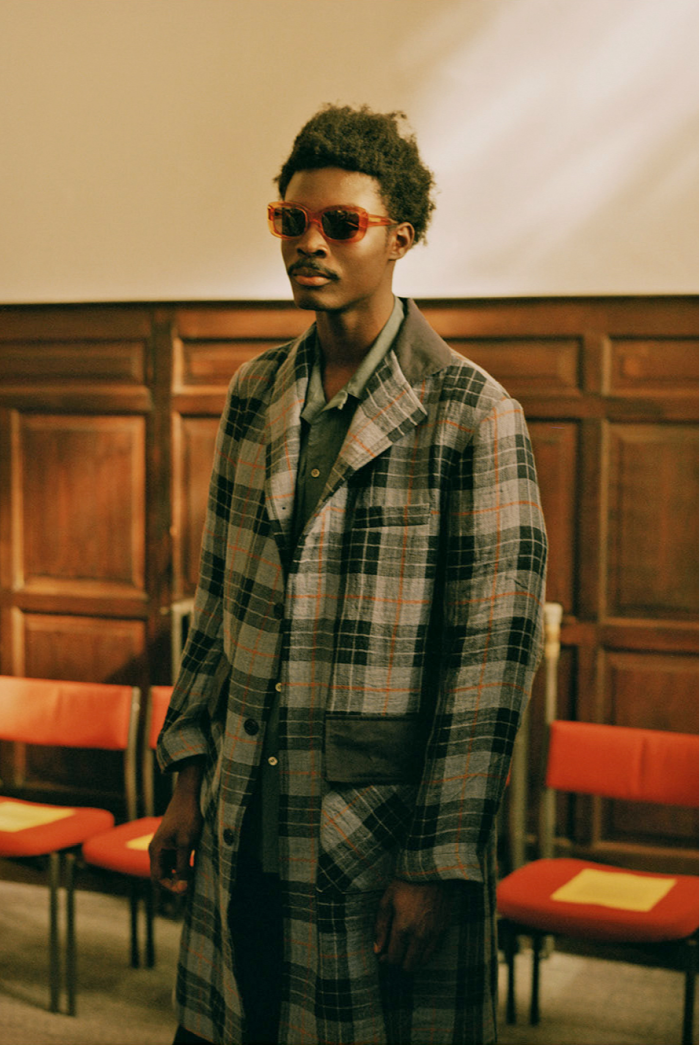
Community, culture and craftsmanship are the three pillars that inform Leicester-born designer Nicholas Daley’s menswear line. He rolls through some of his influences: “Musicians that inspire me, like Shabaka Hutchings playing saxophone, Yussef Dayes on his drums or James Massiah doing poetry”; his Scottish-Jamaican heritage; and the manufacturing and techniques that go into his collections – “Irish linens, bespoke tartans from Scotland, handmade shoes from Northampton and buttons from Gloucestershire.”

Daley graduated from Central Saint Martins in 2013, and after stints at Paul Smith, Hardy Amies and Nigel Cabourn launched his label in 2015; his first collection was produced with Japanese retailer Beams. The 30-year-old has since collaborated with Adidas and Fred Perry and was one of this year’s LVMH Prize winners. From his studio in Tottenham, he creates collections that fuse workwear and tailoring while injecting influences from reggae and jazz.
“I feel like I can add more to the industry, in terms of culture and references and telling stories that might have been told before but not in the right way, or not told at all,” says Daley. “That’s one of the reasons I thought it was important to start a brand – there is still a void to be filled. I feel like I’ve got a duty to do that.”

Despite the fashion industry’s challenges as a result of the coronavirus pandemic, Daley says there’s still space for new voices. “I feel a bit knocked back from the momentum I had at the beginning of the year, but all you can do is refocus and pull your sleeves up and get on with it.”
Supriya Lele
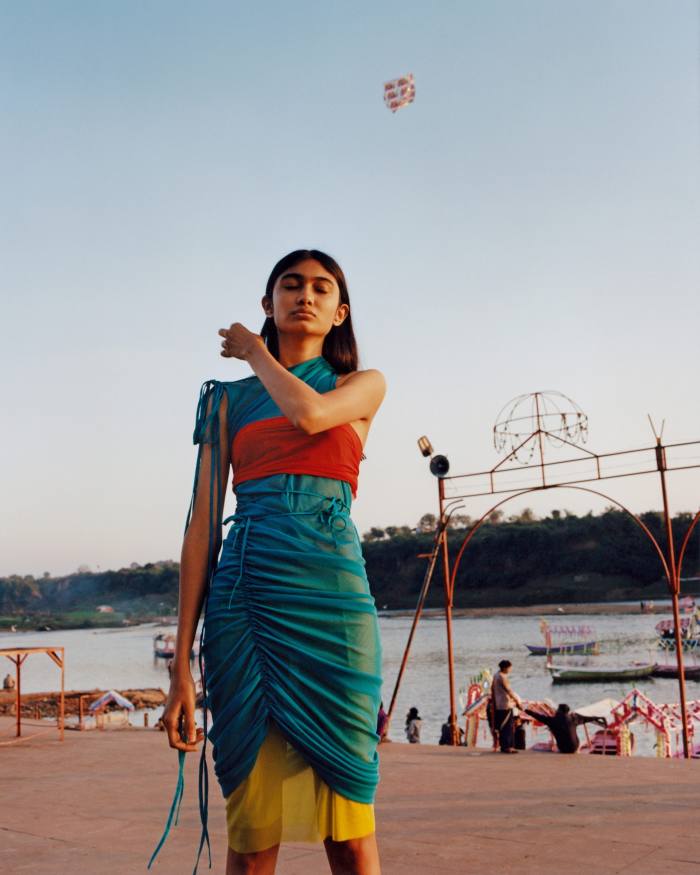
“I’m trying to propose a new idea of Indian femininity,” says 32-year-old British-Indian designer Supriya Lele of the motivation behind her brand. “We’ve seen all the recognisable tropes, either quite craft-based or very glitzy, Bollywood-y – those are the codes everybody is familiar with.”

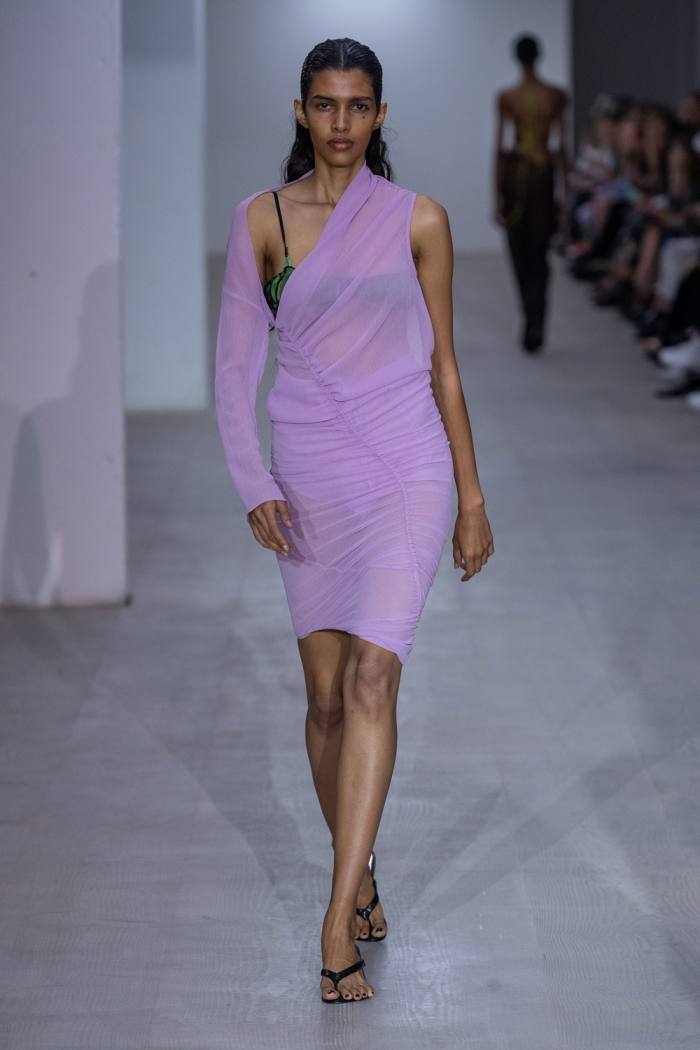
Instead, Lele is creating clothes that speak to her experiences growing up in the UK, immersed in the popular culture of the late 1990s and early 2000s, as well as the trips to India she made with her parents. “I would hold on to memories of the women in my family, and these very clean and simple silhouettes – the outlines of sari shapes, asymmetry and sheer fabrics,” she explains.
Lele, one of this year’s LVMH Prize winners, founded her brand in 2016 after doing her master’s at the Royal College of Art in London; before that she worked as a studio assistant at Roksanda Ilincic and a design assistant at Nicole Farhi.
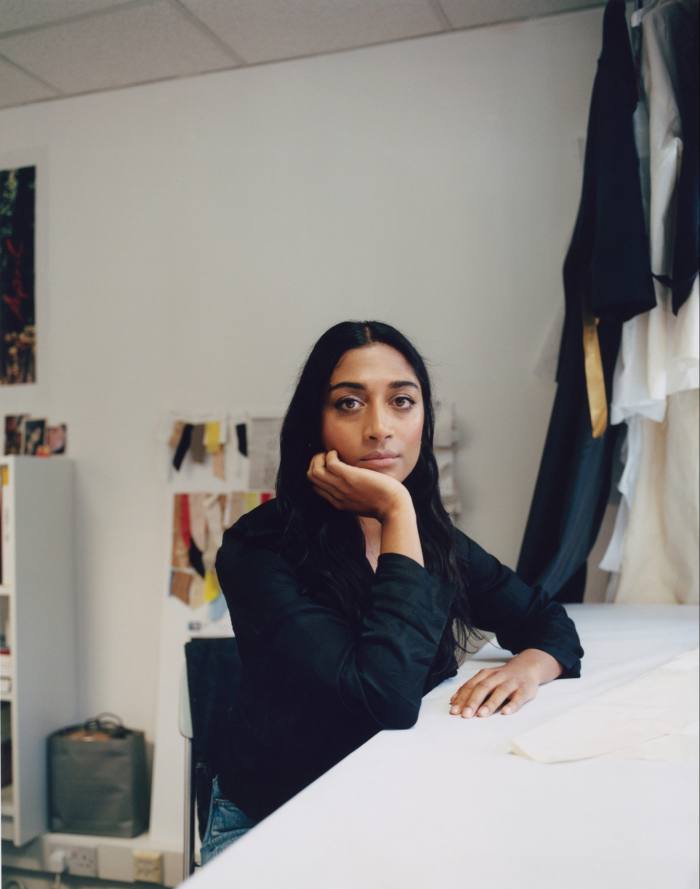
Now based between her home in Brockley and a studio in London Bridge, Lele designs clothes that include the bright hues and madras prints associated with India, as well as black and rubberised fabrics, which she says represent Britishness. “These are subversive elements – I love to have this interplay between something that’s traditional, but also reads in different ways in different contexts,” she says.
Kenneth Ize

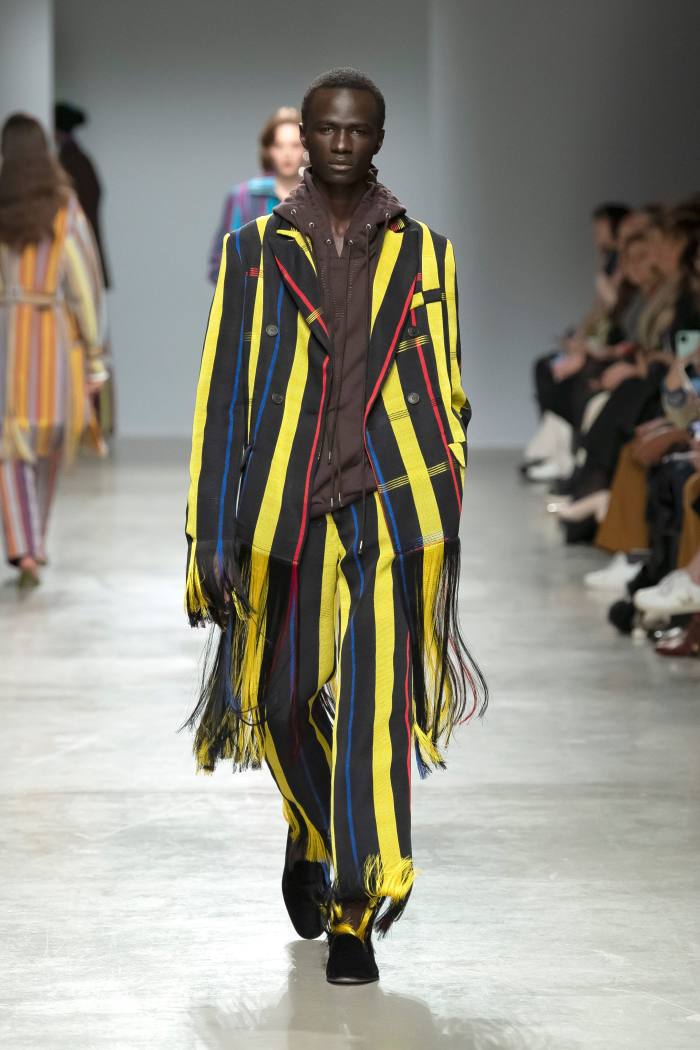
The Lagos-based designer made his Paris Fashion Week runway debut this year with a cast of models more commonly found at a major house’s show – Naomi Campbell, Imaan Hammam, Adwoa Aboah, Ugbad Abdi and Lindsey Wixson all strode down the catwalk dressed in Ize’s signature vibrant designs. It was a splashy arrival for a relative newcomer, who has quietly been gaining industry attention since 2016.

Ize, who was born in Nigeria and moved to Austria when he was four, studied at the University of Applied Arts Vienna under the guidance of Hussein Chalayan, interned at New York-based Edun and was an LVMH Prize finalist last year. His designs explore the dichotomy between west African craft and European tailoring: striped and checked woven fabrics are cut into double-breasted jackets, while fitted trousers are finished with fringing at the hems.
“I want the brand to create infrastructure in Nigeria, because we have all this technique, but we don’t really use it,” says 30-year-old Ize of the country’s struggling textiles industry. He employs artisans in Lagos, Kwara and Kogi to create the fabrics, which are cut and sewn in Italy. “My weavers and I come together – they help me with picking the yarn or arranging what the patterns should look like,” says Ize. “I love craftsmanship and I love when people work with their hands, so doing that in Africa was the perfect thing.”
Meryll Rogge
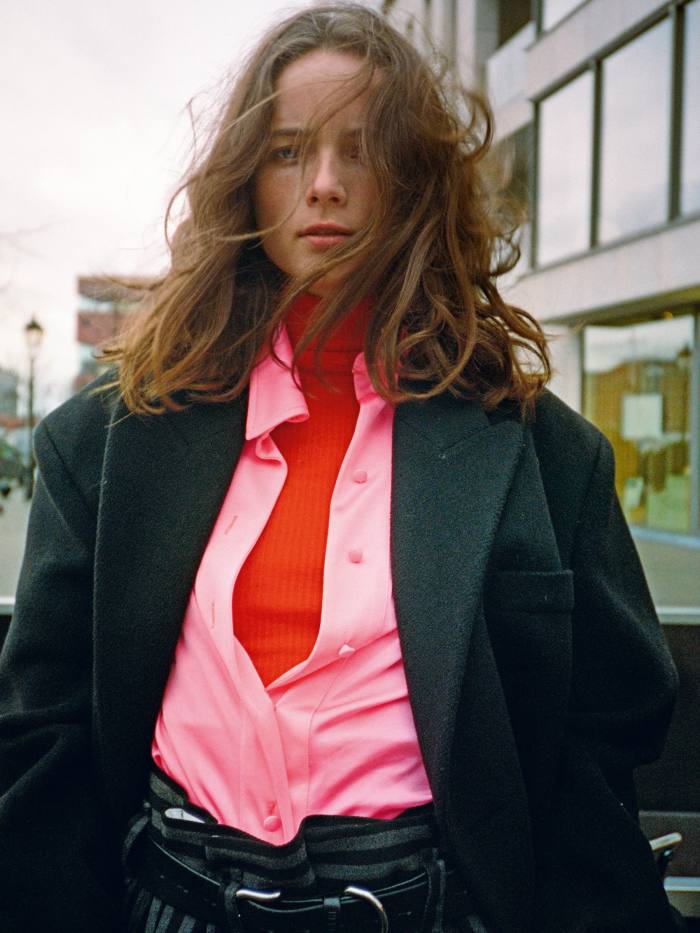
It’s the kind of career most young designers can only dream of: since graduating from Antwerp’s Royal Academy of Fine Arts in 2008, Meryll Rogge has worked alongside Marc Jacobs and Dries Van Noten, and is poised to launch her own brand this September.

Based just outside Ghent and working from a converted barn, the 35-year-old is creating clothes that lie somewhere between traditionally masculine and feminine silhouettes, and cater to the practical needs of women. “I feel like the perspective of a woman designer is very different from a man, and there aren’t enough women designers,” says Rogge. “I think a man designs for mannequins, and women – Miuccia Prada and Phoebe Philo, or Elsa Schiaparelli back in the day – they design for us.”
The global pandemic has added a big hurdle to the already difficult task of preparing to launch a brand. But Rogge has secured stockists around the world, including Bergdorf Goodman and Nordstrom in the US and stores in Berlin, Italy, France and Japan. “It’s not an easy time to break through as a young brand,” says Rogge. “But there will always be a need for new perspectives… the world can’t rely solely on established talents, or culture just stagnates and dies.”
Sindiso Khumalo

While South African designer Sindiso Khumalo admits it’s a strange time to be selling luxury dresses, she believes it’s more important than ever to refocus on conscious spending. “People are going to be more aware of where they’re spending their money,” she says. “Although it’s going to be hard, there is a benefit for people who are doing things that are a bit more niche or conscious or sustainable – something that’s got a point of view.”
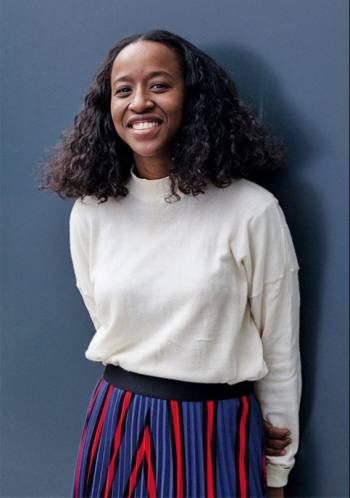
Khumalo’s own brand is a case in point. The LVMH Prize winner, who worked for architect David Adjaye before doing her master’s at Central Saint Martins, founded her label in 2015 and has since centred it around working with artisans in Burkina Faso and in her local Cape Town to create handwoven and printed textiles with a sustainable skew. “Rather than having this template of what I think my perfect collection is, I look at what they do and see how I can incorporate those skills into my work. It’s a conversation with the artisans – because they are artists too.”
But Khumalo’s mission is bigger than making clothes. She also works with an NGO called Embrace Dignity that helps women escape exploitative sex work and teaches them skills such as embroidery and hand quilting. These techniques are central to Khumalo’s collections, which feature printed prairie dresses, twin sets and balloon-sleeve blouses influenced by her Zulu and Ndebele heritage. “My priority is to try to get women out of poverty and into an environment that is stable,” she says. “It’s always been about social uplifting and community.”
Charlotte Knowles


A mutual appreciation for Rick Owens, Helmut Lang and pop music on MTV brought together Alexandre Arsenault and Charlotte Knowles, the duo behind this south London-based brand.

The pair, who met while studying at Central Saint Martins, launched the label in 2017 and have swiftly built a fan base that includes model Bella Hadid, actress Hunter Schafer and pop artist Grimes. Both Knowles and Arsenault design the collections, which usually feature corsetry, underwear-as-outerwear and bodycon silhouettes with a focus on minute details such as zips and buckles.
“I think there’s something intrinsically feminine about the pieces, but there are also elements that are quite tough and warrior-esque,” says 27-year-old Knowles, who grew up in Hampshire. “I think a lot of women really identify with that – they just want to feel strong but also wear really beautiful, delicately designed things.”
The brand is stocked at Selfridges in London and Ssense in Montreal, where Arsenault grew up. “It is our perspective on the world and what the future of femininity could be,” says 30-year-old Arsenault. “It’s about a woman who is in control with how people perceive her.”
Saul Nash
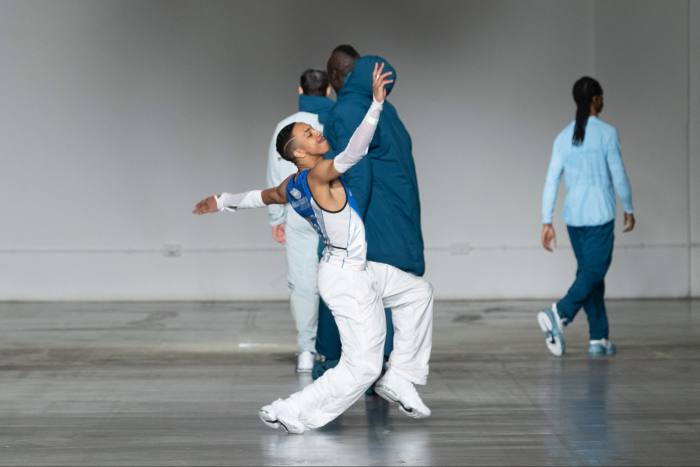
Saul Nash’s autumn/winter 2020 show, which saw dancers dart, slide and twirl around models on the runway, was one of the highlights of London Fashion Week in February. “I was trying to explore and create tension between dance and movement for the men wearing the clothes,” says Nash, who showed as part of non-profit initiative Fashion East alongside Nensi Dojaka – another stand-out of the shows.

Before turning his hand to menswear, the 27-year-old studied performance design and practice at Central Saint Martins, which harboured his ongoing fascination with how movement relates to clothes. “It came from a personal need as a dancer, but also from a need for creating clothes that liberated men for movement while enabling them to look good and express themselves in a way that feels comfortable,” says Nash.
That translates to performance wear made from four-way stretch fabric, Lycra and knitwear that can be moulded to the body. As well as designing clothes, Nash works as a choreographer; he collaborated with Neneh Cherry on the remake of her Buffalo Stance video this year and worked with acclaimed stylist Ibrahim Kamara for a project with Vogue Italia. “I would love to be able to keep moving between theatre and fashion, and do a lot more things which bring those worlds together,” he says.


